-
General check-up …
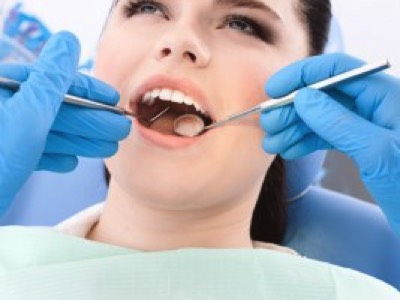
-

Tooth extraction …
-
Prophylaxis …
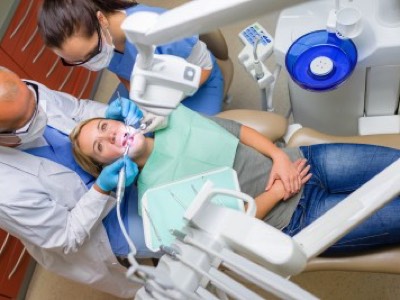
-
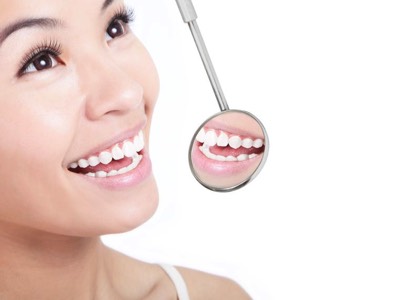
Teeth whitening …
-
Invisible braces…
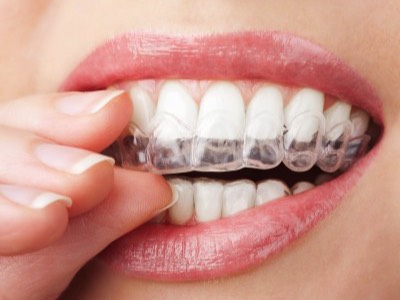
-
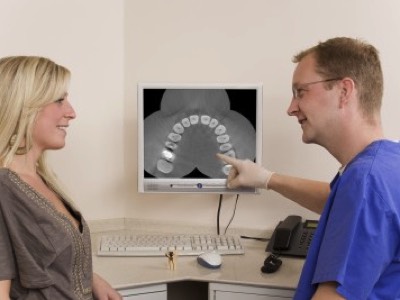
Accurate diagnostics and more.

To familiarize you with what we provide, we have listed our available services above and provided short, but concise definitions in layman's terms. If you need more information about the services, email us and we'll be glad to discuss it with you.
Bridges
In dentistry, a bridge is a type of denture that is designed to fill in for a single missing tooth anywhere in the mouth. The name of this type of implant refers to the fact that the denture is held into place by being affixed to the teeth on either side of the missing tooth. It is officially known as a fixed partial denture.
Read more:
Dental Find
We offer both Acrylic and Flexie types of bridges.
Crowns
A crown is a type of dental restoration that fully cups over that portion of a tooth or dental implant that lies at and above the gum line.
Once placed, it in effect becomes the tooth's new outer surface. In comparison, a dental filling just fills in or repairs a portion of a tooth.
Dental crowns are permanently cemented into place. The tooth-crown unit that results is cared for and functions like any natural tooth. (Reference http://www.animated-teeth.com)
We use stainless steel for kids. Regular and all-porcelain for adults.
Dentures
Dentures are a set of replacement teeth, sometimes called "false teeth," that can be worn to replace a person's natural teeth that are lost due to aging, periodontal disease, injury or decay. They allow the wearer to bite, chew and speak normally.
Dentures are fitted specifically to the patient's mouth and will likely need only small adjustments over time. The patient can have either a full set of dentures (top and bottom teeth) or just a set for the upper or lower arch if necessary.
Dentures have become less common with improvements in oral health.
Read more:
Dental Find
Depending on the amount you're willing to spend, you can be fitted with either immediate or conventional dentures. The biggest difference between the two is the amount of time you have to wait before being able to use your new set of teeth.
Immediate Dentures
Once your teeth are removed, your dentist can provide you with a set of immediate dentures. These may not be a perfect fit, but you won't have to wait several months for your gums to heal before using dentures. Once your gums have fully healed, you'll most likely be fitted for a set of conventional dentures. Immediate dentures are commonly made from hardened plastic.
Conventional Dentures
Conventional dentures are ones that have been fitted specifically to your mouth. They're likely to be more comfortable than the immediate dentures and won't require much in the way of additional office visits. Conventional dentures can be constructed from either porcelain or hardened plastic.
Read more:
Dental Find
We perform the following procedures as well:
Adjustments, Repair and Re-align.
Digital X-rays
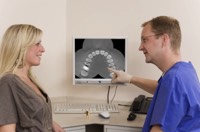
Our clinic is equipped with a digital x-ray which allows us to quickly perform diagnostics of your problematic tooth with high accuracy. You are assured that you do not have to wait too long to be treated from whatever tooth aches that's bothering you.
We practice a complete patient and doctor transparency on all the x-rays that will be taken. Right after we take x-ray "pictures" of your teeth, we will discuss with you our findings and explain to you on how we will perform the required procedures where necessary.
Exams
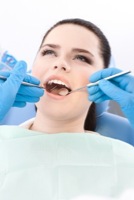
We are trained to inspect and analyze gum conditions, lesions, breath odors which are all indicators that you may be suffering from some illness other than just a bad tooth. These examinations form the first part of our preventive dental care and will help you stay healthy.
Extractions
Extractions are often categorized as "simple" or "surgical".
Simple extractions are performed on teeth that are visible in the mouth, usually under local anesthetic, and require only the use of instruments to elevate and/or grasp the visible portion of the tooth. Typically the tooth is lifted using an elevator, and using dental forceps, rocked back and forth until the periodontal ligament has been sufficiently broken and the supporting alveolar bone has been adequately widened to make the tooth loose enough to remove. Typically, when teeth are removed with forceps, slow, steady pressure is applied with controlled force.
(Source: Wikipedia)
Surgical extractions involve the removal of teeth that cannot be easily accessed, either because they have broken under the gum line or because they have not erupted fully. Surgical extractions almost always require an incision. In a surgical extraction the doctor may elevate the soft tissues covering the tooth and bone and may also remove some of the overlying and/or surrounding jawbone tissue with a drill or osteotome. Frequently, the tooth may be split into multiple pieces to facilitate its removal. Surgical extractions are usually performed under a general anesthetic.
(Source: Wikipedia)
Following extraction of a tooth, a blood clot forms in the socket, usually within an hour. Bleeding is common in this first hour, but its likelihood decreases quickly as time passes, and bleeding has usually stopped after 24 hours. The raw open wound overlying the dental socket takes about one week to heal. Thereafter, the socket will gradually fill in with soft gum tissue over a period of about one to two months. Final closure of the socket with bony remodelling can take six months or more.
(Source: Wikipedia)
Fillings
To treat a cavity , we will have to remove the decayed portion of the tooth and then "fill" the area on the tooth where the decayed material was removed.
Fillings are also used to repair cracked or broken teeth and teeth that have been worn down from misuse.
There are different options available in our clinic, namely Amalgam (silver) and composite (to match the color of the teeth).
Prophylaxis
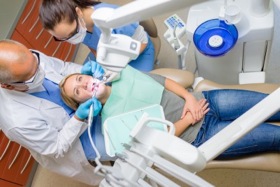
Prophylaxis is the cleaning of the teeth, a measure taken to maintain health and prevent the spread of gum disease.
With regular dental prophylaxis we can prevent the development of gingivitis, periodontitis, tooth decay, and bad breath.
The procedure includes the removal of plaque build-up and polishing.
Read more:
Dental Find
Root Canals
Root Canals
A root canal is a treatment used to save a damaged, injured or infected tooth. In the past, dentists had to pull a tooth once the root became infected. But the root canal procedure prevents that.
Sometimes called endodontic therapy, a root canal can be performed by your regular dentist, or he may refer you to a specialist (an endodontist). Depending on the complexity of the problem tooth, it may require up to three visits to completely perform a root canal and capping procedure.
When a Root Canal is Needed?
A root canal becomes necessary when the pulp inside the tooth becomes infected or damaged. The pulp material is normally protected by a layer of dentin inside the tooth, which is further protected by the tooth’s exterior enamel. If a cavity reaches deep enough, or if the layers are degraded by tooth decay, it can expose the pulp to the bacteria in the mouth. A tooth that’s damaged by a crack or another type of injury can also expose the pulp.
Bacteria can lead to the pulp becoming infected. It can cause further problems because the pulp extends from the interior chamber of the tooth down through the roots and into the jawbone. This can ultimately lead to disease in the bone, and when it progresses to that stage, extracting the tooth is often the only option.
Read more:
Dental Find
About Dr. Maria Supnet-Gozun,DDS
Dr. Maria Gozun, DDS has been a practicing dentist for more than 25 years and is recognized as one of America's Top Dentist for 2012 - Verified by Consumer's Research Council of America.
She's a graduate of New York University and University of the East-Philippines. She keeps her professional experience updated by being a member of the Academy of General Dentistry.
Visit her at her office to experience what it means to get personalized treatment and great patient care.
What We Do
Our office provides all general dental services, examinations, diagnostics, and dental treatments catering to all ages.
Our Services
Our Team
Our Office
Office Schedule
Directions
Insurance and Payment Providers
Contact Us
Telephone: (718) 897-3400
Fax: (718) 897-3401
98-76 Queens Blvd., Suite P-1
Rego Park, NY, 11374
(corner of 66th Ave., & Queens Blvd.)
Schedule an Appointment
Inquiry Forms
Patient Forms

